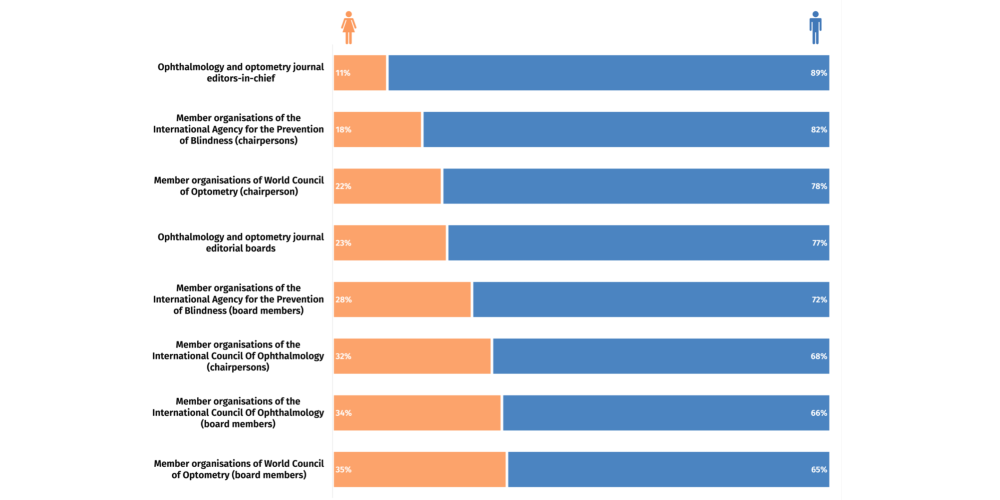Join a powerful, unprecedented alliance for better eye health for all.
Join IAPB
Globally, women face more barriers in accessing health care. Although women make up 70% of the health workforce, they hold only 25% of senior roles . We know that under-representation of women in decision making positions limits the acceptability of services for women, further exacerbating the gap in access and uptake of services.
Health systems will be stronger and health outcomes more equitable when the women who deliver them have an equal say in the design of national health plans, policies, and systems.
Stakeholders at every level have a role to play in paving the path for a more equitable future in how people access services, how they are delivered, by whom, and who is making decisions around such activities and resource distribution.
In a recent report by the WHO it was found that it is “women who deliver global health and yet men lead it. Health systems will be stronger when the women who deliver them have an equal say in the design of national health plans, policies and systems”. Continued unequal health outcomes and structural gender inequity will persist if women’s perspectives are not included more intentionally in planning, policymaking, and programming.
Moreover, by applying an intersectionality lens — the way that different factors such as race, class, gender, and other identities combine to affect lived experiences differently – we ensure that the consideration of socially stratifying factors are able to further illuminate, track and monitor inequities in eye health.
Closing the Leadership Gap: Gender Equity and Leadership in the Global Health and Care Workforce is a joint effort of World Health Organization, Global Health Workforce Network, and Women in Global Health.
Key findings of the report include:
At Sightsavers, Gender Equity is embedded as a cross-cutting theme to our eye health, education and social inclusion programmes.
Click here to read an interview with Sightsavers Chief Executive, Dr Caroline Harper, highlighting the significance of women leaders and Sightsavers’ organisational commitment to Gender Equity.
The Foundation believes good eye health and access to eye health care is part of every human’s fundamental right to good health and wellbeing. This means that all people should have access to quality, efficient, and affordable eye health care. At The Foundation, we want to embed gender equity and inclusion in all that we do. We want to model it internally, support a flexible workplace culture and empower our women to be leaders in the global health sector. Within The Foundation, we have a Gender Equity and Inclusion Leadership Group which leads and champions gender equity across The Foundation.